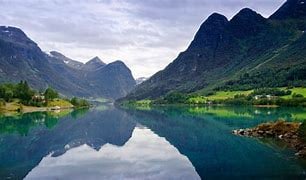
AsianOverland.net
Tour Guide - Itinerary
Asian Overland Sydney to London
Started 22/06/2022 Finished 21/06/2023365 Days ITINERARY
Day 231 date 07/02/2023OSLO to VIKING MUSEUM, NORWAY
ASIANOVERLAND.NET RUSSIA SCANDINAVIA
DAY 7/231 1981 – OSLO TO VIKING MUSEUM, NORWAY
VIKING MUSEUM
The Viking Age (793–1066 AD) was the period during the Middle Ages when Norsemen known as Vikings undertook large-scale raiding, colonizing, conquest, and trading throughout Europe, and North America. The Scandinavians of the Viking Age are often referred to as Vikings as well as Norsemen.
The beginning of the Viking Age in the British Isles is often set at 793, when the Northmen raided the important island monastery of Lindisfarne:
"A.D. 793. This year came dreadful fore-warnings over the land of the Northumbrians, terrifying the people most woefully: these were immense sheets of light rushing through the air, and whirlwinds, and fiery dragons flying across the firmament. These tremendous tokens were soon followed by a great famine: and not long after, on the sixth day before the ides of January in the same year, the harrowing inroads of heathen men made lamentable havoc in the church of God in Holy-island (Lindisfarne), by rapine and slaughter."
After 830, the Vikings had considerable success against Ireland, England, and other parts of Western Europe.
The Kingdom of the Franks under Charlemagne was devastated by the Vikings, who sailed up the Seine with impunity. Near the end of Charlemagne's reign (and throughout the reigns of his sons and grandsons), a string of Norse raids began, culminating in a gradual Scandinavian conquest and settlement of the region known as Normandy
In 911, French King Charles the Simple granted the Duchy of Normandy to Viking warleader Rollo (a chieftain of Norwegian or Danish origins) in order to stave off attacks by other Vikings.
Charles gave Rollo the title of Duke, and Rollo swore fealty to Charles, converted to Christianity, and undertook to defend the northern region of France against the incursions of other Vikings. Several generations later, the Norman descendants of these Viking settlers not only identified themselves as Norman, but also carried the Norman language and their Norman culture into England in 1066. With the Norman Conquest, they became the ruling aristocracy of Anglo–Saxon England.
The clinker-built longships used by the Scandinavians were uniquely suited to both deep and shallow waters. They extended the reach of Norse raiders, traders, and settlers along coastlines and along the major river valleys of north-western Europe.
The Vikings also expanded to the east, and in 859 became ruler of the city of Novgorod on the Volkhov River, and founded the early East Slavic state of Kievan Rus' with the capital in Kiev. This persisted until 1240, when the Mongols invaded Kievan Rus'.
Other Norse people continued south to the Black Sea and then onto Constantinople.
Whenever Viking ships ran aground in shallow waters, the Vikings reportedly turned them on their sides and dragged them across the shallows into deeper waters. The eastern connections of these "Varangians" brought Byzantine silk, a cowrie shell from the Red Sea, and even coins from Samarkand, to Viking York.
© This work is copyright. Apart from any use permitted under the Copyright Act 1968, no part may be reproduced by any process, nor may any other exclusive right be exercised, without the permission of Peter Searle, peter@portseavillageresort.com; 1980-2024.
Website built by Justin O’Dea www.webdeveloperdocklands.com.au





